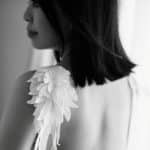Despite the convenience and flexibility that WFH provides, many companies are still hesitant to embrace a permanent remote work set-up. And a lot of this has to do with the persistent narrative that employees benefit more than their employers in this arrangement.
This growing divide between remote employers and employees was especially evident in a viral LinkedIn post. One commenter mentioned how companies were quick to forget how remote kept their businesses going during lockdowns.
However, someone else commented that it’s normal for companies to recall their employees to the office now that vaccination drives are ongoing. They also pointed out that although remote workers kept businesses afloat, employers helped households survive by providing jobs during the pandemic.
Now, the question is, how do we reconcile these two conflicting viewpoints and find a compromise that works for everyone?
Who REALLY benefits in a remote work setup?

A lot of companies still believe that having the staff back in the office will further improve productivity. Morgan Stanley’s CEO, for one, set a firm deadline for the companies’ employees to return by Labor Day.
However, there’s no solid proof behind this persistent belief. In fact, it has been proven time and again that remote work also benefits the employer in the form of increased productivity, among other things. Take the pandemic, for example. How many businesses have managed to survive and even thrive despite the lockdowns thanks to technology and their remote workforce?
Let’s face it. Remote work benefits employers tremendously. They can save a lot of money when they don’t need the extra office space and overhead. If they hire offshore talent, they can save even more money because they can hire an entire team overseas for the cost of just one local employee in some cases. (The Australian dollar goes much farther in the Philippines, for instance.)
We haven’t even discussed how hiring offshore talent expands your reach exponentially too. Why hire the best social media manager in, say, Sydney or Melbourne, when you can get the best one in Southeast Asia?
Then there’s the fact that offshore talents can give you an edge over your competitors. Thanks to the time zone difference, you can hire an entire customer service team abroad to offer 24-hour assistance – without having to pay costly labor differentials at home.
But what if you can’t implement a fully remote set-up?

Many employees are still hesitant about returning to the office due to safety and health concerns. In some cases, some would rather quit than give up remote work.
But what if the nature of your business prevents you from adapting a completely remote set-up? How do you retain your top talent then?
First, it helps to understand where your employees are coming from. Granted, remote work is not for everyone. However, employees should have the freedom to choose their preferred setup whenever possible – so long as they still produce great output.
If you really must have your employees back in the office, consider a hybrid set-up where people can come in on different days. You should also cultivate a safe and healthy environment by equipping the office with thermal scanners, regularly disinfecting surfaces, and, of course, encouraging your employees to get vaccinated.
You and your employees may not always agree on the way forward. However, you can treat these situations as opportunities for growth and innovation. After all, the hybrid work model is the result of such a compromise – and the future seems to lie in this fusion of remote and onsite work.
If you’re still unsure as to how to go about the remote work industry, you’re not alone.
Remote Staff has been helping AU SMEs and entrepreneurs like you make a smooth transition into the digital future by providing skilled and talented remote workers from the Philippines for the last 14 years and counting. So whether you need one remote worker or an entire distributed team, we know just how to help you.
Call us today or schedule a call back and let’s get started.
Serena has been working remotely and writing content for the better part of the last decade. To date, she's written for Pepper.ph and Mabuhay Magazine, among others, and has churned out more than a thousand articles on everything from The Basics of Stock Market Investing to How to Make Milk Tea-Flavored Taho at home. Hermits, aspiring hermits, and non-hermits with interesting project propositions may email her at serena.estrella10@gmail.com.





















